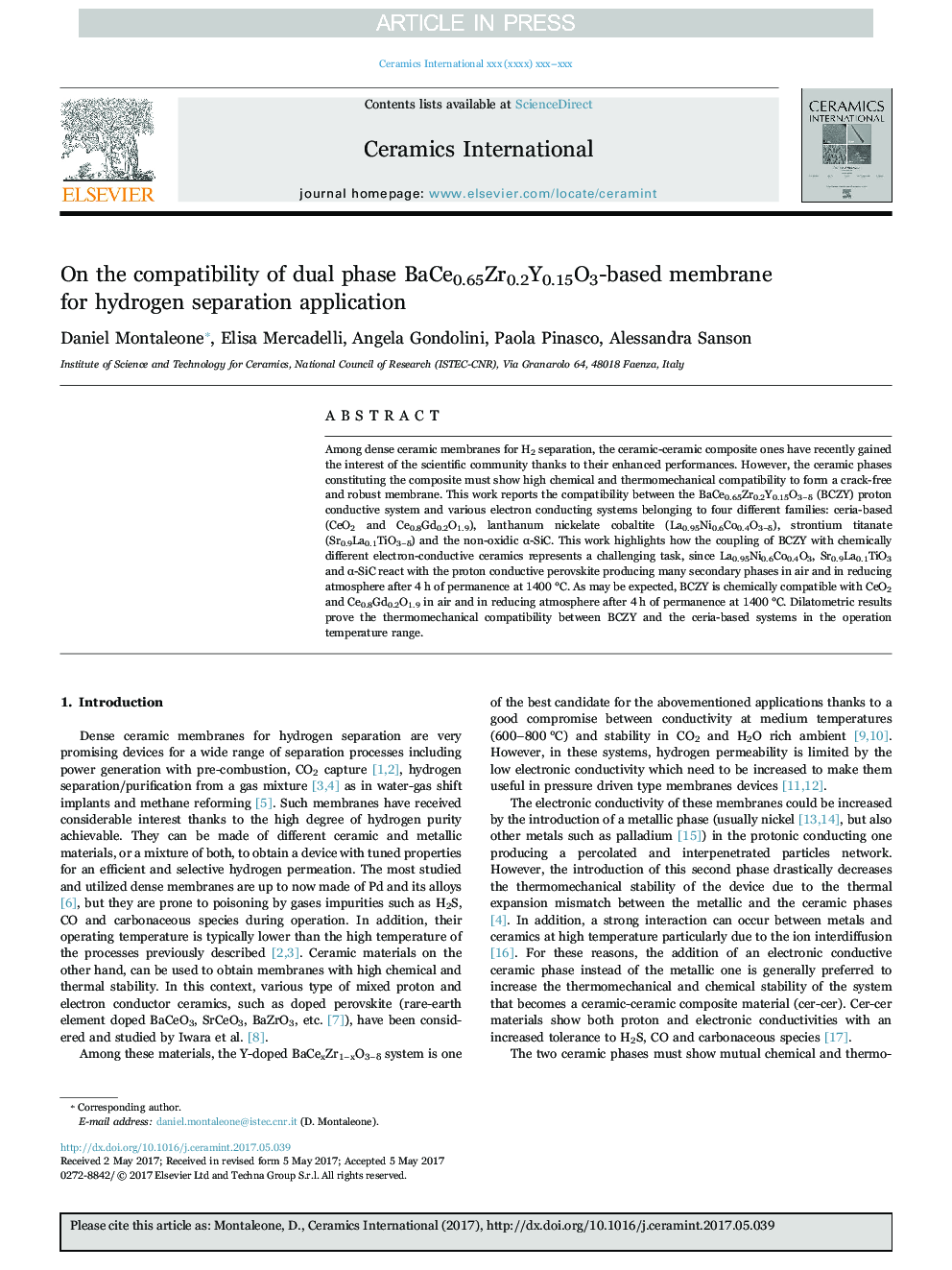| Article ID | Journal | Published Year | Pages | File Type |
|---|---|---|---|---|
| 5437680 | Ceramics International | 2017 | 7 Pages |
Abstract
Among dense ceramic membranes for H2 separation, the ceramic-ceramic composite ones have recently gained the interest of the scientific community thanks to their enhanced performances. However, the ceramic phases constituting the composite must show high chemical and thermomechanical compatibility to form a crack-free and robust membrane. This work reports the compatibility between the BaCe0.65Zr0.2Y0.15O3âδ (BCZY) proton conductive system and various electron conducting systems belonging to four different families: ceria-based (CeO2 and Ce0.8Gd0.2O1.9), lanthanum nickelate cobaltite (La0.95Ni0.6Co0.4O3âδ), strontium titanate (Sr0.9La0.1TiO3âδ) and the non-oxidic α-SiC. This work highlights how the coupling of BCZY with chemically different electron-conductive ceramics represents a challenging task, since La0.95Ni0.6Co0.4O3, Sr0.9La0.1TiO3 and α-SiC react with the proton conductive perovskite producing many secondary phases in air and in reducing atmosphere after 4 h of permanence at 1400 °C. As may be expected, BCZY is chemically compatible with CeO2 and Ce0.8Gd0.2O1.9 in air and in reducing atmosphere after 4 h of permanence at 1400 °C. Dilatometric results prove the thermomechanical compatibility between BCZY and the ceria-based systems in the operation temperature range.
Related Topics
Physical Sciences and Engineering
Materials Science
Ceramics and Composites
Authors
Daniel Montaleone, Elisa Mercadelli, Angela Gondolini, Paola Pinasco, Alessandra Sanson,
